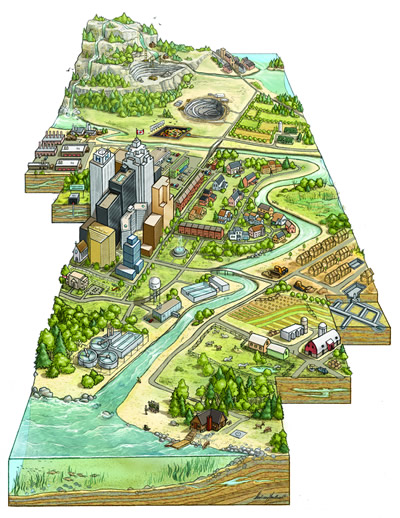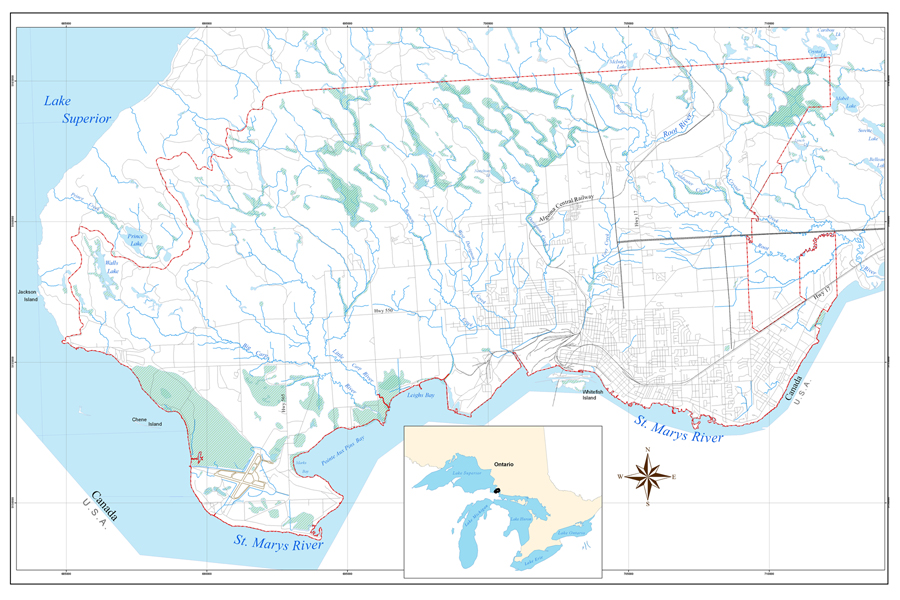 What is a Watershed?
What is a Watershed?
A watershed is an area of land that catches rain and snow and drains or seeps into a marsh, stream, river, lake or groundwater. Homes, farms, cottages, forests, small towns, big cities and more can make up watersheds. Some cross municipal, provincial and even international borders. They come in all shapes and sizes and can vary from millions of acres, like the land that drains into the Great Lakes, to a few acres that drain into a pond.
Watersheds come in all sizes
Watershed management in its simplest terms means managing wisely upstream so that downstream remains natural and healthy. The Conservation Authority model has received worldwide recognition over its 50+ year history and the watershed is now recognized as one of the premier natural ecosystem units on which to manage resources.
The responsible care of our natural resources and wildlife on a watershed basis is essential to balancing human economic needs against the needs of our natural environment. We all need a vibrant environment in order to ensure that we have plenty of clean water and a healthy ecosystem. As caretakers of our environment, we need to continue to devise approaches to plan, promote and implement stewardship practices that protect and restore natural resources.
Conservation Authorities have a long history in working with landowners in the planning and delivery of watershed stewardship initiatives.
Conservation Authorities:
- Develop technical tools to monitor and assess the state of our watersheds
- Provide advice and technical assistance
- Promote community involvement
- Build partnerships with all levels of government, environmental groups, businesses, residents and landowners
- Create educational resources
Sault Ste. Marie Region Conservation Authority Watershed












